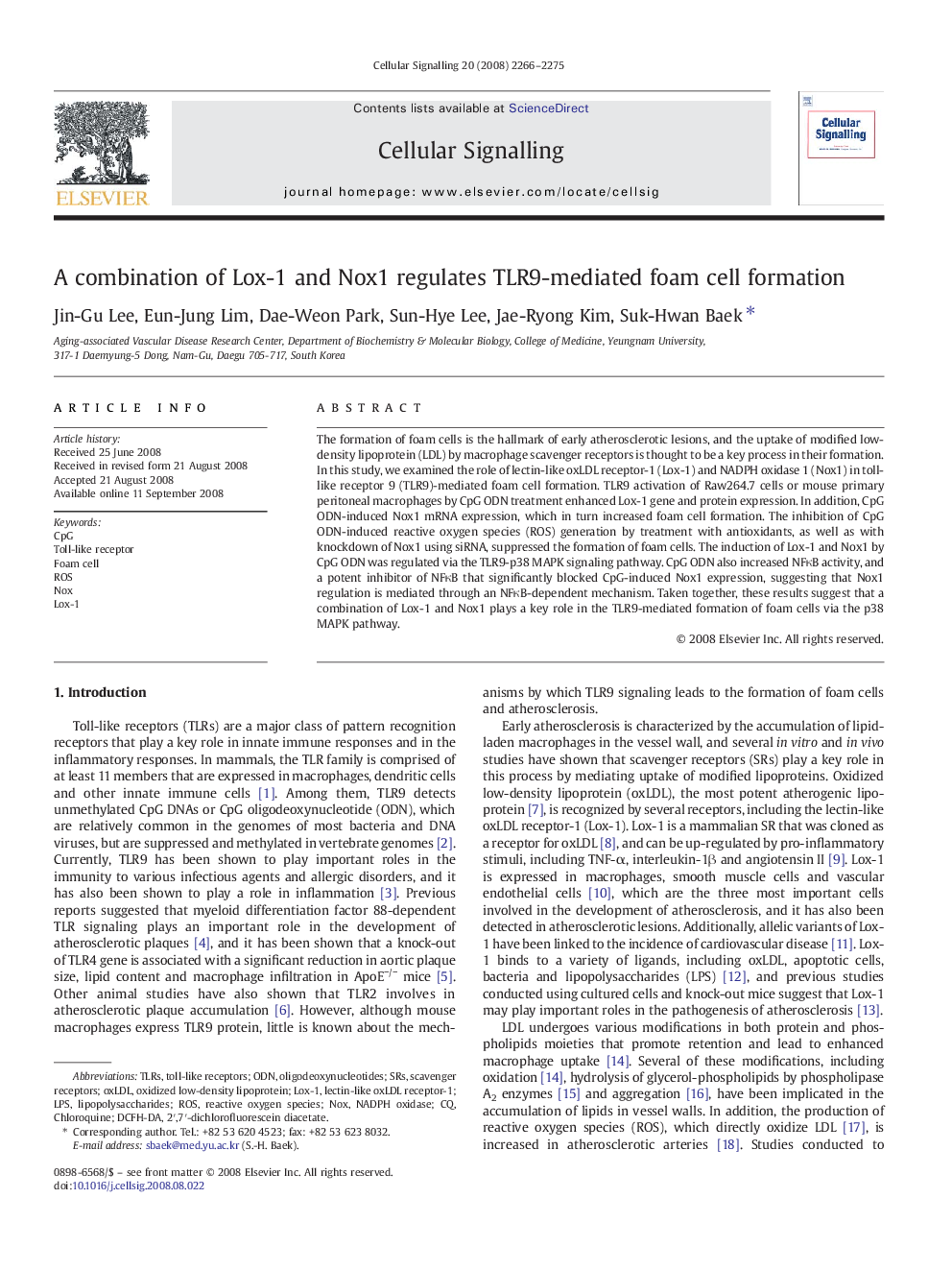| Article ID | Journal | Published Year | Pages | File Type |
|---|---|---|---|---|
| 8309268 | Cellular Signalling | 2008 | 10 Pages |
Abstract
The formation of foam cells is the hallmark of early atherosclerotic lesions, and the uptake of modified low-density lipoprotein (LDL) by macrophage scavenger receptors is thought to be a key process in their formation. In this study, we examined the role of lectin-like oxLDL receptor-1 (Lox-1) and NADPH oxidase 1 (Nox1) in toll-like receptor 9 (TLR9)-mediated foam cell formation. TLR9 activation of Raw264.7 cells or mouse primary peritoneal macrophages by CpG ODN treatment enhanced Lox-1 gene and protein expression. In addition, CpG ODN-induced Nox1 mRNA expression, which in turn increased foam cell formation. The inhibition of CpG ODN-induced reactive oxygen species (ROS) generation by treatment with antioxidants, as well as with knockdown of Nox1 using siRNA, suppressed the formation of foam cells. The induction of Lox-1 and Nox1 by CpG ODN was regulated via the TLR9-p38 MAPK signaling pathway. CpG ODN also increased NFκB activity, and a potent inhibitor of NFκB that significantly blocked CpG-induced Nox1 expression, suggesting that Nox1 regulation is mediated through an NFκB-dependent mechanism. Taken together, these results suggest that a combination of Lox-1 and Nox1 plays a key role in the TLR9-mediated formation of foam cells via the p38 MAPK pathway.
Keywords
Related Topics
Life Sciences
Biochemistry, Genetics and Molecular Biology
Biochemistry
Authors
Jin-Gu Lee, Eun-Jung Lim, Dae-Weon Park, Sun-Hye Lee, Jae-Ryong Kim, Suk-Hwan Baek,
